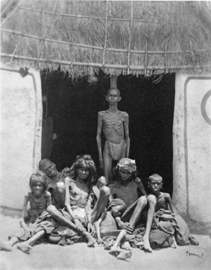Registered with the Registrar of Newspapers for India under R.N.I 53640/91
Vol. XXVI No. 22, March 01-15, 2017
The work ahead
(By The Editor)
Drought & water shortage must be priority of new government
And so we have a new government in our State. An EPS Government. And it has its work cut for it. For its predecessor, Amma’s Government, had promised much for the next four years. And those promises next to be kept, if the EPS Government is to return to power at that times.

At the moment, credibility in public perception of the EPS -Government is of concern, even if stability is assured for the present to gain credibility, it needs to reach out to its supporters at the ground level, passionately in interior villages and hamlets.
For this, the Chief Minister and his government need to work committedly to tackle a heavy agenda awaiting action. There is much to do apart from the settlement of the Cauvery issue and the question of enacting legislation that will enable the State to have its own examination for medical (an, in time, engineering) seats. The first priority is overcoming the current drought conditions in most parts of the State and water shortage in urban areas while tackling the present crisis it needs to look at long term solutions to prevent much water draining into the sea when there is good rain.
It also needs to look at its finances. The priority is the Report on Tamil Nadu for 2014-15 by the Comptroller and Auditor General of India reveals that revenue from public debt in year 2010-11 was Rs. 13,000 crore burgeoning to Rs. 31,000 crores in 2014-15. Ratio of capital expenditure to total expenditure has been eroding from 15.46 in 2011-12 to 11.79 in 2014-15. These are indicative of a shift from building infrastructure and social assets to over-generous vote-winning freebies. A correction is essential to wean people away from a lust for one-off kinds of goodies that have no lasting economic benefit. Pro-active collaboration with the Centre, transcending political rivalries, could add substantial value to the State’s own efforts.
Basic permanent type of insulation against periodic storms and floods are another priority. For a burgeoning population in our -cities, civic amenities like better drainage systems, conservancy -services and use of technology for proper disposal of wastages are urgently needed.
The standard of education in the State is considered deplorable, by leading educationists who point to the unemployability of graduates and lack of skills in school-leavers. This is something that has to be tackled immediately, not least by insisting on higher standards both from students and teachers.

And as has been stated in these columns in the past, industry and investment are at the moment not particularly in favour of the State.
The agenda list is only illustrative. It is to show that Tamil Nadu cannot wait. It cannot afford to lose its race for pre-eminence in good governance and development. It is time for the EPS Government to give the State a wake-up call.
But this will not happen again
Christopher Penn writes that “when I was recently in Madras and Ooty, drought and water shortage were frequent topics of conversation. But famines were tragedies of the past, what was the Presidency. These two -pictures tell something of one of them. The Duke of Buckingham, as Governor of -Madras during the 1877/78 famine, initiated several efforts to relieve the distress. Work was put in hand on roads, canals – the Buckingham Canal dates from this time – and other infrastructure to provide employment, and famine relief kitchens were set up to feed the starving population.
“William Digby, who was editor of The Madras Times during the famine, provided a comprehensive summary of the relief work in his book The famine campaign in Southern India – Madras and Bombay Presidencies and the Province of Mysore 1876-78 published in 1878. He noted that merchants had foreseen the coming shortage of rice long before the Government was ready to take action and had shipped large quantities of rice into Madras. Subsequently when the Government grasped the severity of the situation, ‘activity in the roadstead and on shore was unexampled in the history of Madras.’ Digby illustrates the point with a lithograph based on Hooper’s memorable photograph of the Madras beach covered with sacks of rice and grain during the famine (top).
“My other picture shows the sad state of those worst affected by the famine. Happily, famines are no longer in the memory of Indians.”

